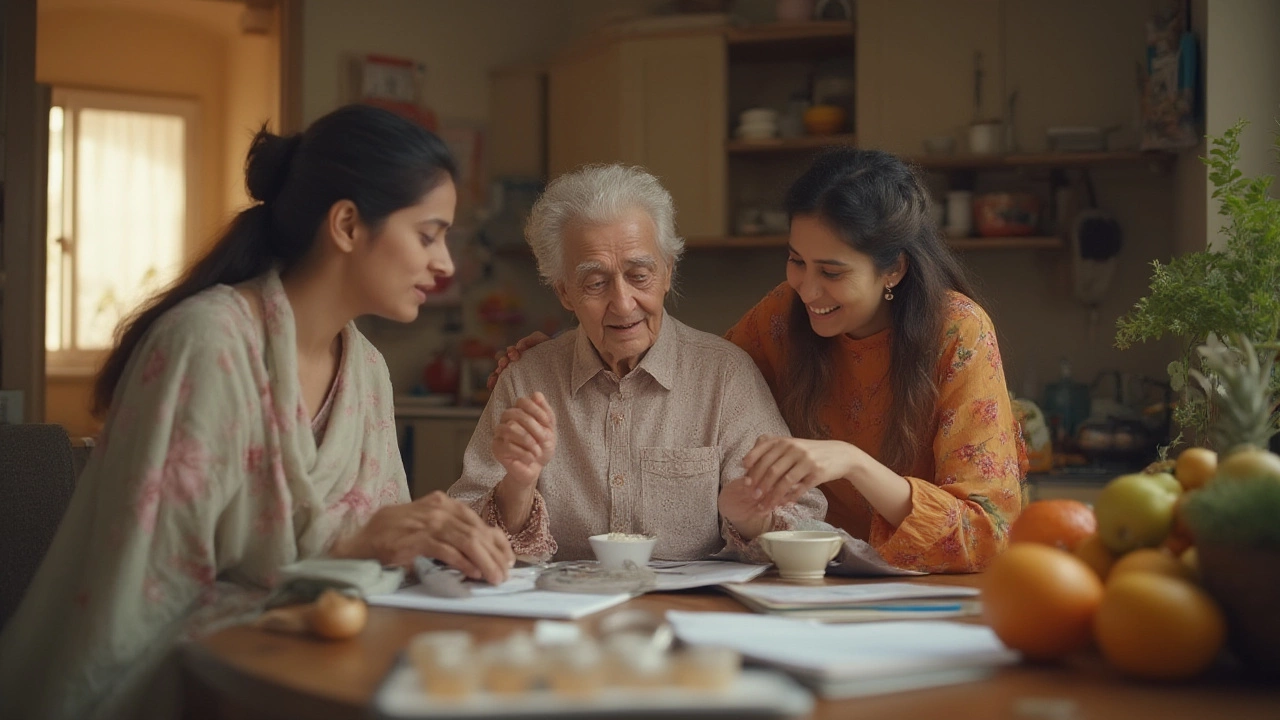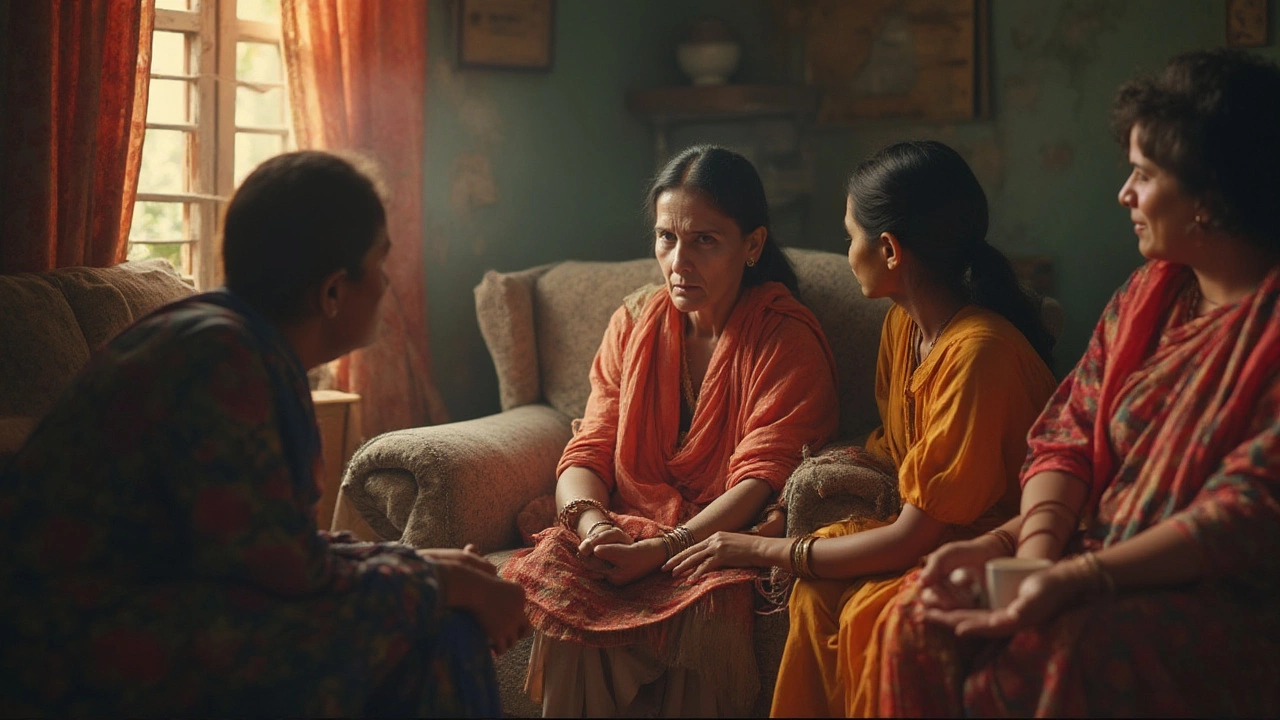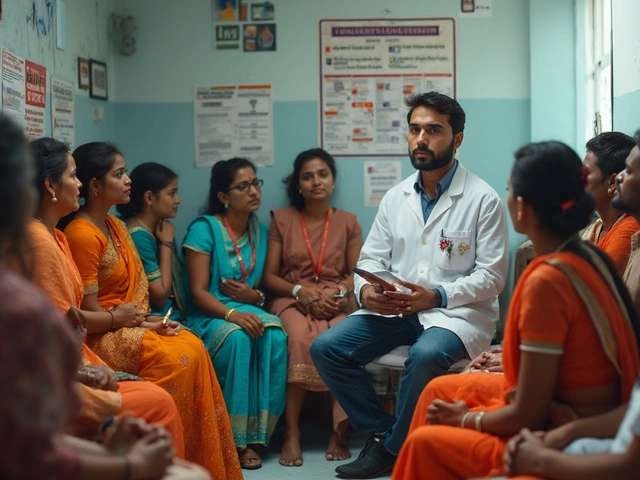You never forget the moment the doctor says, “There’s nothing more we can do.” Time seems to twist. Suddenly, the calendar matters more than ever. But nobody hands out a detailed road map for the last 6 months of cancer. Everything feels uncertain, but things do tend to follow certain patterns—sometimes quietly predictable, sometimes entirely unpredictable. I’ve been through this with people I love, and it never looks quite like the movies. That’s why I’m laying out what really happens, the signs to watch for, and how families can prepare and cope.
Physical Changes and Symptoms in the Last 6 Months
The physical journey toward the end of life with cancer doesn’t begin suddenly. Most patients reach a place where treatment stops helping and the focus quietly shifts to comfort. Energy drops, and fatigue becomes a near-constant companion. Getting out of bed feels like a challenge. Friends visiting? That becomes rare, mostly because even talking chews up too much energy.
Pain gets more complicated. It’s not just a single ache; it moves, changes, and creeps up in new places. Hospice teams often adjust medication plans every week, or even every few days. Morphine or similar drugs sometimes become a new norm, and I’ve seen families hesitate, worried about addiction. But by this stage, nobody cares about addiction—what everyone wants is relief and peace.
Appetite often disappears. It’s not stubbornness when a loved one stops eating; food just doesn’t taste good, and the body pulls away from the urge. I remember trying to coax my uncle with homemade kheer, but after a spoonful, he smiled and shook his head. It wasn’t about willpower. Towards the last months, dramatic weight loss and muscle wasting are common, and the look of the person changes. The arms and legs thin out, faces become gaunt. Yet, at this point, these changes aren’t usually painful—the body just lets go.
Breathing patterns also shift. Some people develop what’s called Cheyne-Stokes respiration: periods of rapid and shallow breaths, then stops, then gasps. It’s jarring at first, but this irregular breathing is a natural part of the body slowing down. Coughing can increase or fluids may build up in the chest, adding to discomfort.
Many people develop swelling in their feet and hands, known as edema, due to fluid retention. Sores on the skin, especially around the backbone and heels (called pressure ulcers), pop up if someone lies in bed for long. Special mattresses and frequent turning become necessary, and that’s something you can easily forget as a family member.
Confusion and restlessness can set in suddenly. This isn’t a sign of the person ‘giving up’—it sometimes comes from toxins building up, side effects of drugs, or simply the end stage of cancer in the brain. Some days, people talk fluently. Other days, sentences wander off and familiar faces get mixed up. It can be painful to witness, but try to remember the person behind the confusion.
Emotional Shifts and Mental Health
As cancer progresses, the emotional landscape changes. Shock and anger often show up early in the journey, but in the final stretch, anxiety often leads the way. “What will happen next?” is the most common silent question. For many, a deep sadness sets in, but it’s not only fear of dying. There’s grief for lost energy, independence, and missed milestones: birthdays, festivals, favorite events. Watching my friend Sameer, he worried not about himself, but about leaving his mother alone.
Depression can hover close, but sometimes, patients begin reflecting on their lives, sorting through regrets and achievements. This “life review” isn’t just poetic—it’s real. People talk about their childhood, their favorite trips, the tastes and smells they love. Sometimes, important conversations finally happen: apologies are made, stories are shared.
The feeling of being a burden to family crops up regularly. Patients notice the work caregivers put in, and sometimes guilt seeps in. It’s why reassurance matters so much—just being present, listening, and reminding them you’re there by choice, not obligation.
Families can feel like they’re carried away in a storm: anger one day, peace the next, numbness after. I’ve seen siblings squabble over the smallest things; stress uncovers long-forgotten wounds. That’s not a failing—it’s just part of the process.
One thing that deserves attention: many people find comfort in rituals, religious faith, or even simple habits. Lighting a candle, reciting prayers, or just listening to old songs can become key moments in the day, providing structure when the future seems uncertain.
Not everyone wants to talk about dying, but for those who do, it’s often a relief. Honest conversations can cut through fear, whether it’s about practical things (“Where do you keep the insurance papers?”) or the big questions (“Will you be okay without me?”). If you’re reading this for someone you love, try not to rush these talks—but don’t avoid them, either.

How the Body Changes: Timeline and Stages
The last six months with advanced cancer rarely follow a tidy script, but you can see trends and patterns. Usually, three phases appear: the decline, the pre-active phase, and active dying.
In the initial “decline” (usually months 6-3), you’ll notice worsening weakness and frequent sleep. Activities shrink: from morning walks to just making it to the living room. Doctors often stop aggressive treatments and focus on simple comfort—soft beds, good lighting, minimal disruptions. This is when most families start to notice falls, infections, or recurring hospital visits. Pain medication becomes the central part of care. Doctors keep a close eye out for new symptoms, as infections can mimic “progression” of cancer at this stage.
Next comes the “pre-active” or transitional phase (months 3-1). Fatigue turns into long, unplanned naps. Confusion arrives more frequently. You might see hands picking at sheets (doctors call this “terminal agitation”), restlessness, hallucinations, or talking to people from the past. Food and water intake drops sharply. Many people can’t swallow pills; liquid medicines or patches replace them. The urge to get affairs in order becomes urgent: legal paperwork, finances, family calls. From a practical view, this is when caregivers should talk to hospice services or palliative care teams, not only for medical help but also for emotional and spiritual support.
The last few weeks mark the “active dying” phase. Breathing slows down and sometimes becomes noisy or irregular. Hands and feet turn cold or bluish. Eyes might stay half-open. Urine turns dark; bowel movements become rare. People are mostly unresponsive now, but moments of clarity can still surprise you—a sudden smile, a whispered thanks. Family and friends gather, sometimes around the clock, sensing the end is near. There’s a phrase you’ll hear from nurses: “The hearing is the last sense to go.” Keep talking, even if you think your loved one can’t respond.
It’s easy to miss small signs: reduced reflexes, hiccups, or twitching muscles. But these aren’t usually painful—they’re just the body letting go. Death itself is usually gentle, quieter and less dramatic than many imagine. Sometimes, people pass away with family sitting nearby, holding hands, with their favorite old movie playing in the background.
Practical Tips for Families and Caregivers
Supporting someone through the final six months of cancer isn’t a skill you’re born with—it’s one you learn, one day at a time. Here are some things I’ve learned from experience, doctors, and other caregivers:
- Don’t force food and fluids. The body knows when it doesn’t need them. Offer small sips, popsicles, or favorite snacks, but respect refusals.
- Keep pain medication schedules regular. Don’t wait for pain to return before giving the next dose. If you’re unsure, reach out to hospice nurses—they’re there for these exact questions.
- Use soft sheets, pressure-relieving mattresses, and gentle repositioning every few hours to prevent bedsores. Even small hand and foot massages can help with comfort.
- Simplify hygiene: sponge baths, mild soap, and gentle shampoo. Try not to make these routines a big event—they’re about dignity, not perfection.
- Watch for signs of distress like grimacing, moaning, or sudden movements, which could signal pain or discomfort, especially if the person can't speak clearly.
- Declutter the bedside: keep only the essentials within reach, and add something familiar, like a favorite pillow, old photograph, or scent, to keep the environment comforting.
- Schedule short, spaced-out visits—long, crowded rooms wear people out. Sometimes, a video call or short voice message is easier than in-person chat.
- Remember to ask visitors to sanitize hands and avoid coming in if they’re sick, as infections can make things harder, even late in the course.
- Keep a small log for symptoms, medication times, and notable changes. This helps doctors and hospice teams adjust care quickly.
- Get comfortable with professionals: ask questions, seek updates, and let them know your priorities. Don’t be shy—it helps them help you better.
One tip that really helped Neha and me when her cousin was ill: every few days, one family member would step out for a long walk or visit a friend. Self-care isn’t selfish. Fatigue and burnout creep up fast if everyone focuses only on the patient. If you need help or a break, ask trusted friends or relatives—even if it’s just for a few hours of honest sleep.
Kids have their own ways of understanding change. If young family members are around, use clear words, not euphemisms. “Grandpa is very sick, and the doctors can’t make him better. He might not be with us much longer.” It’s better to answer their questions honestly than let imagined fears build up.
Rituals, traditions, and shared activities matter. Even listening to a favorite song or watching old cricket highlights can bring comfort, not only for the patient but also for everyone around. Light, laughter, and reminiscing about silly memories don’t feel disrespectful; they’re a small rebellion against fear itself.

What Comes Next: Planning, Grief, and Looking Forward
When the time comes, some families are caught off guard by how quiet and anticlimactic the moment can be. There are things you can do now—long before you’re lost in the momentary fog of loss—that make later days easier.
Set up plans early, even if they feel awkward. This could mean discussing will updates, property details, pending bills, or making funeral choices. I know it’s uncomfortable. But having details sorted ahead clears up space for pure presence when the time comes. Legal paperwork, bank access, digital passwords—sort these out before the last few weeks, if possible. There are detailed planning kits available online or through hospital social workers.
Grief is never what you expect. It doesn’t follow rules. You might feel relief mixed with sadness, or anger mixed with gratitude. There aren’t rights or wrongs. The thing that surprises people is how much room there is for laughter alongside pain after someone passes. Stories, food, and shared tears ease things more than formal ceremonies ever could.
Remember, support doesn’t end at the funeral. Bereavement counselors, support groups, spiritual advisors, or just honest friends are a lifesaver, especially in the weeks after. The best advice I got? Accept every genuine offer of help—even if it’s just someone dropping off groceries, or sitting with you in silence. You don’t have to be strong all the time.
One authentic fact: hearing is often the last sense to go in dying patients. Hospice nurses recommend talking, even when you think there’s no chance of a reply. Play a beloved song, share a short story, or promise to care for a family pet. Sometimes, those are the last things heard before letting go.
Living through the last 6 months of cancer changes everyone, not just the patient. It teaches what matters: honesty, compassion, presence. As tough as it is, each moment—hard or peaceful—has its own value. If you or someone you love is in this phase, please know you don’t have to walk alone. Asking for help, sharing your feelings, and remembering the everyday joys can be the difference between surviving these days and finding something meaningful in the middle of the hardest goodbye.





